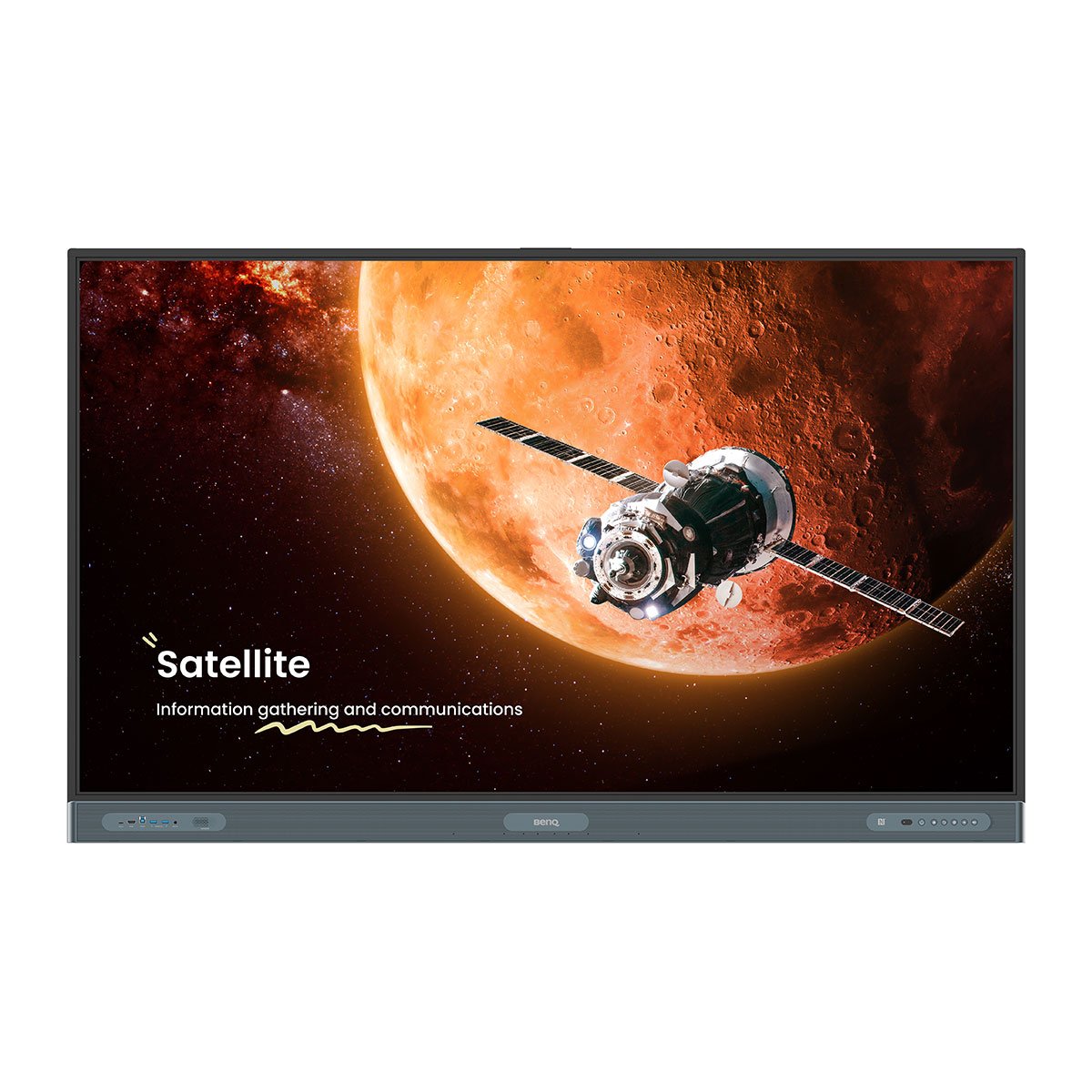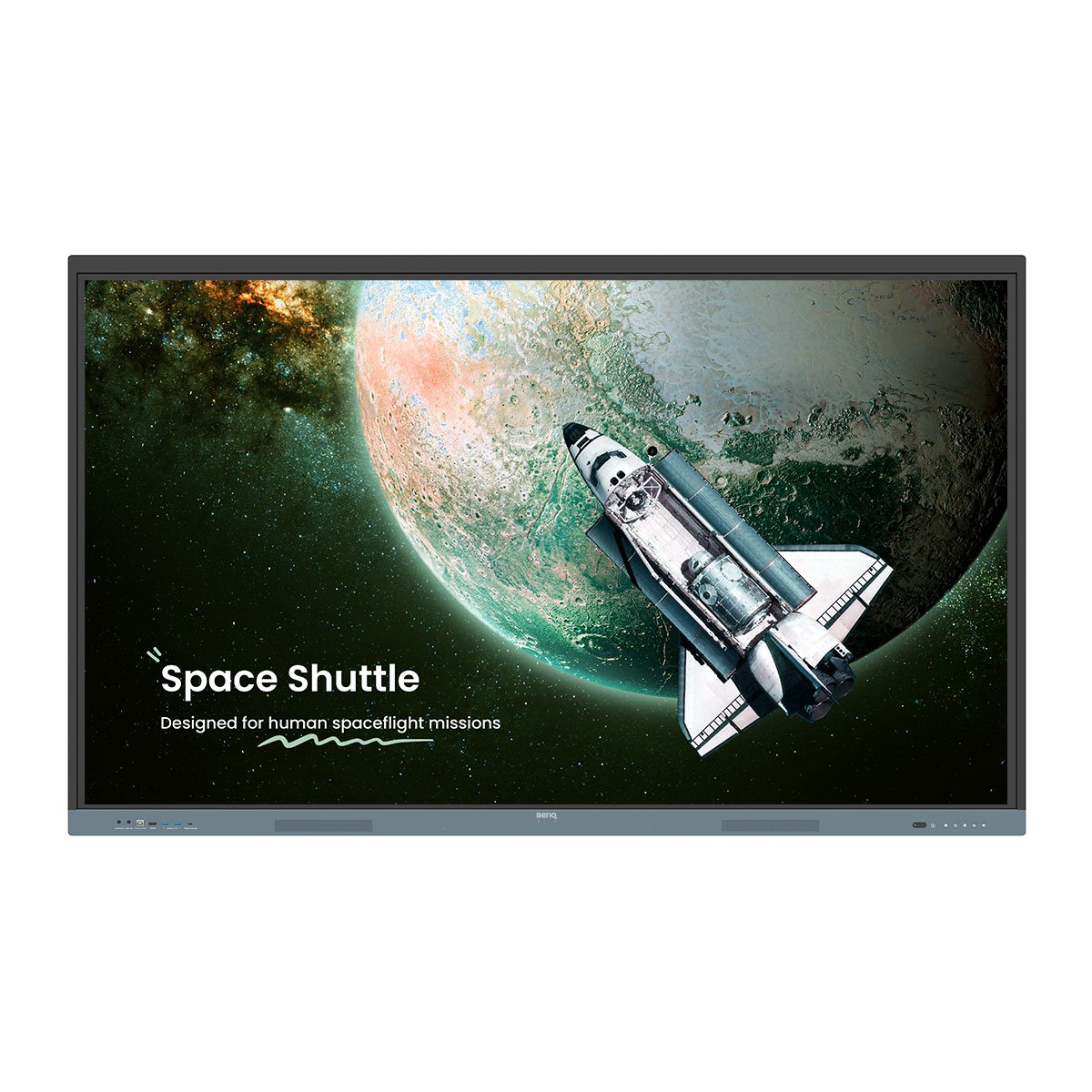Classrooms relied on traditional whiteboards and chalkboards for decades. Yet, as education evolves, these tools have struggled to keep up. Enter the smart board – a game-changer in learning.
These displays are designed to ignite imaginations and empower students to become active participants in their education. Imagine:
- Vibrant lessons that come to life with visual content, powerful whiteboard note-taking tools, and real-time collaboration.
- Information that transcends static text with interactive maps, simulations, and immersive virtual tours.
- Collaboration that lets students share ideas, give annotated feedback on projects and learn from each other in real time.

Smart boards such as the BenQ Board give teachers the tools they need to create their own teaching space, access materials in the cloud, give interactive lessons with AI tools, and more.

What is a smart board?
Smart boards are large, interactive flat panel displays that blend the familiar whiteboard with the power of digital technology. This dynamic combination empowers teachers to create engaging lessons that promote active student participation and make learning fun.
Interactive boards, such as BenQ Boards, are all-in-one teaching solutions, replacing traditional whiteboards, overhead projectors, and TV carts. They feature smart whiteboard software, wireless screen sharing, a customized teaching space, and easy access to your lesson materials on the cloud.
The latest EDLA boards also give users full access to Google’s core apps and services, including the Play Store and its library of apps.
How teachers use smart boards for teaching
Using smart boards in the classroom
Imagine easily giving vibrant lessons with interactive visuals, collaborative problem-solving, and student-led presentations. That’s the power of smart displays because they’re designed to transform classrooms into hubs where learning leaps off the screen.

Teachers can easily import multimedia lessons and content, make real-time annotations, record their lessons, and share materials with students using smart boards such as the BenQ Board Pro RP04.

Best smart board features for teaching and learning
Below are some examples of how teachers use smart boards in classrooms:
- Android apps: EDLA-certified boards, such as the new 04 series of BenQ Boards, offer Google’s core services, from Google Docs, Slides, and Sheets to Google Meet. Teachers can also download their favorite apps from Google Play to the board. That includes the hundreds of educational apps in the Play Store’s Teacher Approved apps program.
- Whiteboarding software: Built-in digital whiteboards, such as EZWrite, offer teachers an unlimited digital canvas. It’s loaded with tools for crafting visual presentations, sharing lesson materials with students, and holding collaborative activities. These electronic whiteboards help teachers take note-taking and explanations to the next level.
- Digital lesson materials: Smart boards let teachers seamlessly integrate digital content into their lessons. Add vivid images, informative documents, and engaging videos directly into lessons for more impactful learning experiences.
- Wireless screen sharing: Easily share your lesson materials to BenQ Board from your tablet, laptop, or smartphone with the InstaShare app. Students can also use their mobile devices to give presentations or quickly share their work with the class. InstaShare also gives teachers robust moderation tools for controlling student screen sharing.
- Powerful annotation: Smart boards empower teachers to write and draw directly over any on-screen content for truly dynamic lessons. Built-in tools like digital pens, calculators, stopwatches, and more transform the board into a versatile learning hub, while scoreboards add an interactive element to keep students engaged.
- Internet access: With a direct internet connection, smart boards unlock all the images, videos, and content on the web, including AI tools, news, research, and global viewpoints.
- Lesson recordings: Teachers can seamlessly record what’s on screen, such as handwritten notes, and their voice, with a smart board’s built-in recording function. They can then easily share these recording files with students to review at their own pace.
- Video calls: For classrooms that engage in remote learning, videoconferencing support is crucial. Smart boards let teachers easily host hybrid lessons, especially when using a Zoom™ Certified BenQ Board Smart Camera and its AI features, including face and voice tracking. This is also a handy setup for parent-teacher calls and conferences in both classrooms and school conference rooms.
If you’re looking for a smart board with all these features, check out the BenQ Board Pro.
Smart boards in the classroom: pros and cons
- Pros: Smart boards can enhance classroom engagement, offering educators a plethora of features to enrich their teaching methods. With unlimited flexibility, educators can teach their way, while the interactive nature of smart boards adds an element of enjoyment for students, thereby improving their focus and potentially their learning retention.
- Cons: Transitioning to smart boards can initially intimidate teachers unfamiliar with the latest technology. Adopting smart boards entails a cost, given they’re a major upgrade from traditional chalkboards, whiteboards, and older interactive whiteboard technology.
However, BenQ Boards are easy to use for teachers and students. They’re also simple to integrate into your school’s tech stack, whether you’re a Google or Windows school. They even make importing user lists a breeze, and they allow for powerful remote management by IT specialists.
The best smart boards for schools
When choosing a smart board for their classrooms, schools often consider leading brands like BenQ, Smart Technologies, Promethean, and ViewSonic. When choosing the best smart board for your learning environment, ensure it includes the following features.

The BenQ Board gives students plenty of opportunities for active, engaged learning by allowing them to easily use the board for collaboration, competition, and content sharing.

Smart boards for teaching active and blended learning
The right interactive digital board isn't just a display; it's a gateway to deeper learning, empowered teaching, and future-proof skills. Their interactive whiteboard and other intuitive tools ensure students are actively engaged, solving problems together, and presenting their findings with confidence.
Smart boards for preschools: hands-on activities
Young minds need durable, interactive smart boards built for playful exploration. BenQ Boards feature sturdy, scratch-resistant displays reinforced with tempered glass ready for even the most enthusiastic learning. Plus, they have up to 50 points of simultaneous, responsive touch letting the entire class join the fun.
Smart boards for elementary schools: cloud-powered lessons
Elementary school teachers need to teach with all types of lesson materials. That includes lessons they create themselves or download online, like worksheets or bulletin board activities. They also need various online tools. This means the ideal smart board should offer easy access to cloud storage and a web browser.
Smart boards for middle and high schools: streamlining communication
Secondary education classrooms need versatile tools that allow students to express themselves and get real-time feedback. Wireless screen sharing allows seamless content projection from any device. Google Workspace and Microsoft Office support ensures familiar tools are available. Integration with Google Classroom streamlines communication and resource sharing.
Smart boards for higher education: fostering real-world skills
Higher education lecture halls, labs, and classrooms need tools for teachers and students to present their preferred content types and files. Smart boards also empower students to research, analyze, and collaborate on a large canvas. The result is that they can further hone their 21st-century skills including critical thinking, emotional intelligence, decision-making, and leadership.

Higher education students can benefit from the collaborative tools available on a smart board such as the BenQ Board, including the ability to annotate over anything on the screen, easy importing of multimedia content, and simplified sharing of discussion results.

How much do smart boards cost
Investing in smart boards can transform your school with engaging lessons, enhanced collaboration, and improved student outcomes.
Pricing considerations
Smart board prices vary depending on size, brand, and features, typically ranging from $3,000 to $7,500. Consider factors like classroom size, intended use, and budget constraints when making your selection.
How to buy a smart board
Don't rely on price tags: Partner with education technology experts for personalized advice and recommendations. They can help you navigate different models, compare features, and find the perfect smart board solution for your specific needs and budget.
Take the first step:
Contact an education technology expert today and start exploring the exciting possibilities that smart boards can bring to your classrooms.



